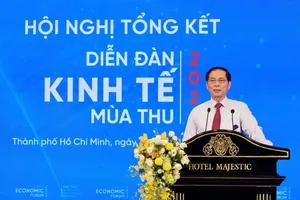
Accordingly, SGGP Newspaper on November 1, 2022 reported the situation of several businesses encountering trouble after investing in solar panels installed on rooftops of houses in the Central and Central Highlands regions. They had to reduce the output and dispose the surplus power.
These businesses informed that from 2020 backwards, they followed the Government’s policy in compliance with Decision No.11/2017/QD-TTg (issued on April 11, 2017) and Decision No.13/2020/QD-TTg (issued on April 6, 2020) to encourage the development of solar energy in Vietnam. At that time, there was no more instruction, warning, or prevention from competent agencies as to this matter.
Dao Du Duong from Vietnam Clean Energy Association in Ho Chi Minh City stated that at present, around 400 enterprises are doing businesses related to rooftop solar panels. 30 percent of them has not had their Feed-in Tariff (FIT) prices approved, and most of them must sell their equipment to repay bank loans.
Seeing that, the Prime Minister has assigned the Ministry of Industry and Trade to review the situation and devise suitable solutions within its power and in compliance with the applicable laws.
Before this, SGGP Newspaper reported that in 13 provinces and cities of the Southern region, the electricity industry has temporarily stopped payments for solar energy for 2,357 customers. Large-scale solar energy investment projects in the Central region such as Phu My Power Plant in Binh Dinh Province with a total investment capital of VND2 trillion (US$80.6 million), Trung Nam – Thuan Nam Power Plant in Ninh Thuan Province with the same investment amount, Thien Tan project in Ninh Thuan Province with the total investment of VND5 trillion ($201.5 million) cannot sell their harnessed energy.
In Vietnam, there are 62 wind power projects producing an output of nearly 3,500MW, with a total investment of tens of thousands of billions of VND, yet they are not able to sell their energy either. This has led to financial trouble to investors since they need to repay their bank loans, maintain operations of the plants, which last only around 20 years.
The reason for this inability to sell energy is the prolonged construction of those projects due to the Covid-19 pandemic, which severely affects both material transportation and arrival of experts in the field. Hence, these projects cannot be completed by the deadline to enjoy FIT prices for solar energy and wind energy on January 1, 2021 and November 1, 2021 respectively.
It has been nearly 23 months and 13 months now for the two corresponding energy types to receive proper instruction from the Ministry of Industry and Trade regarding power purchasing. That has caused a huge financial waste of businesses and citizens.
























